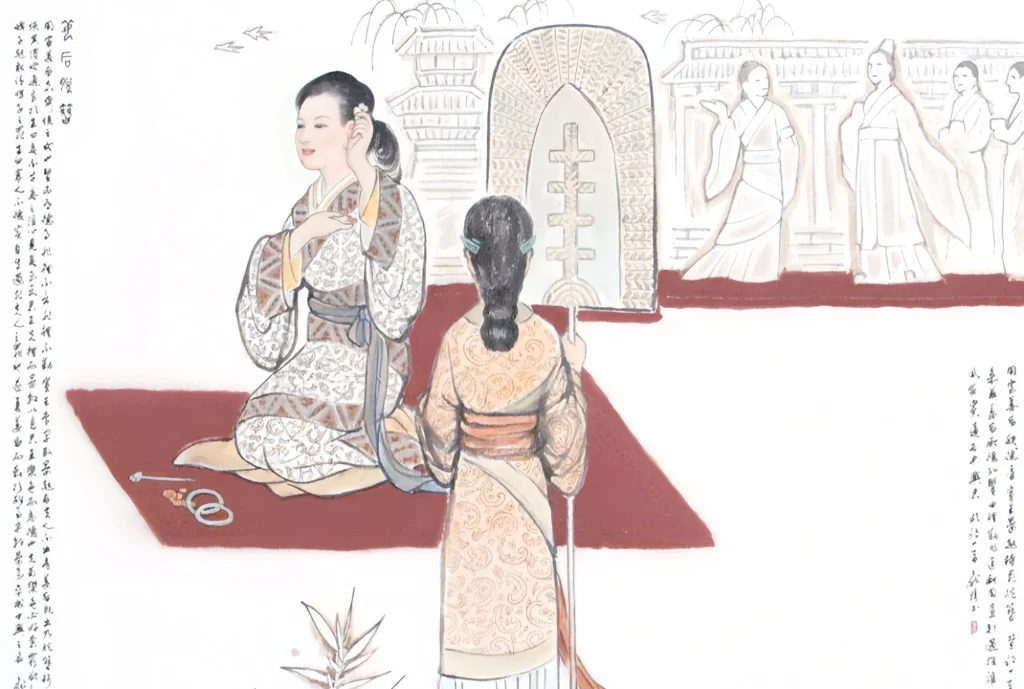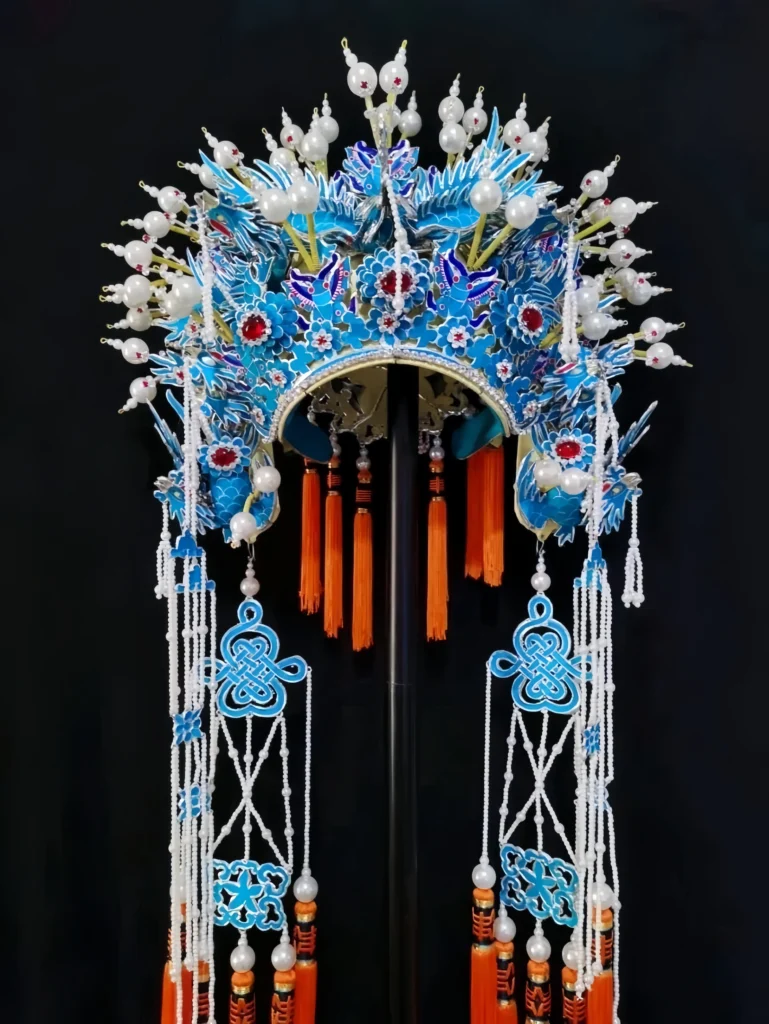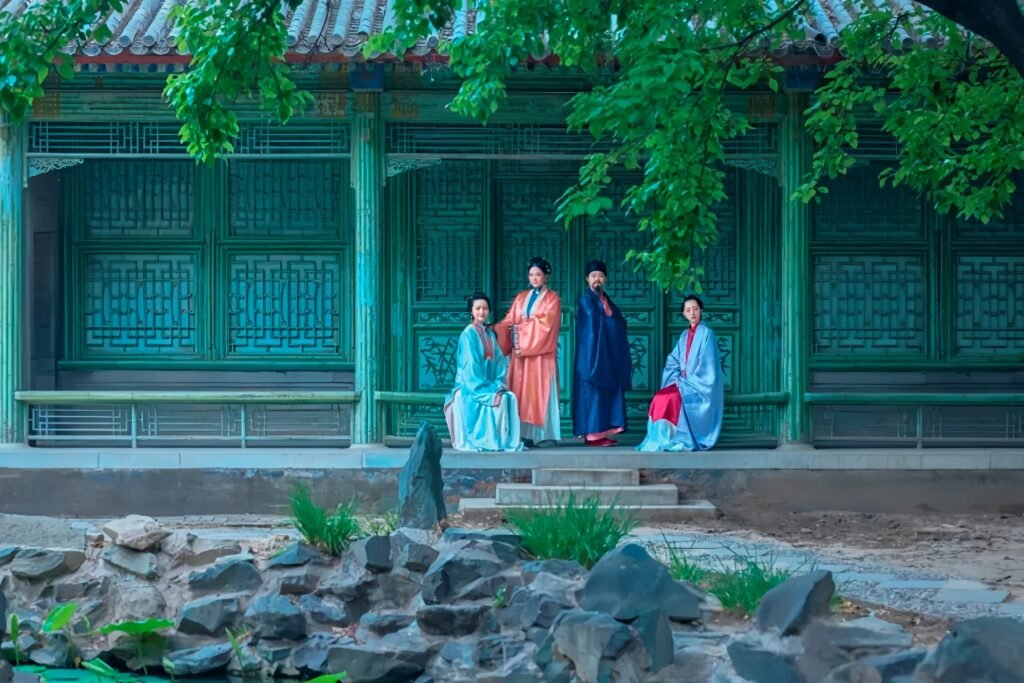Unveiling 5 Chinese Hair Accessories: A Journey Through Hanfu Hairpins

The artistry of Chinese hair accessories is a dazzling chapter in the story of Chinese civilization. From the intricate jade zan of the Longshan Culture to the swaying elegance of Tang dynasty buyao, these adornments have crowned the tresses of women for millennia. As the hanfu movement revives traditional Chinese fashion, hairpins like zan, chai, and buyao are making a stunning comeback. This blog explores five iconic Chinese hair accessories, their historical significance, and their enduring charm in modern hanfu culture.
What Are Chinese Women’s Ancient Hair Accessories?
Zan, chai, buyao, huasheng, bi, dianhua.
The hair accessories of ancient Chinese women are a radiant star in the history of Chinese civilization.
Today, let’s explore together the dazzling brilliance that adorned the tresses of ancient times.
The Timeless Allure of Chinese Hair Accessories
Chinese hair accessories are more than decorative—they embody cultural values, social status, and aesthetic ideals. Crafted from materials like jade, gold, and tortoiseshell, these pieces were integral to ancient women’s attire, particularly during ceremonies like the Zhou dynasty’s ji ceremony. Today, the hanfu revival has brought these accessories back into the spotlight, with enthusiasts styling their buns with hanfu hairpins to celebrate China’s heritage. Let’s dive into five key types of Chinese hair accessories that continue to captivate.
Curious about the broader context of Hanfu and its accessories? Visit our comprehensive guide to embrace the charm of traditional culture.
Jade Artifacts from the Longshan Culture
The jade craftsmanship of the Longshan Culture saw significant advancements, with the most striking feature being the intricate patterns on jade artifacts. Excavated Longshan Culture jade pieces reveal a rich variety and high artistic level. Among them, a jade zan inlaid with turquoise, unearthed from Tomb 202 at the Xizhufeng site in Linqu County, Shandong Province, stands out for its elegant shape and exquisite design. This jade zan consists of a decorative head and a jade handle, with the head featuring openwork carving and inlay techniques, crafted into a complex, symmetrical pattern that is delicate and translucent. Many netizens can’t help but exclaim: It’s absolutely stunning!


1. Zan: The Classic Hairpin
The zan evolved from the ji, a long needle used by ancient people to secure hair buns or crowns. Compared to the ji, zan offered a wider range of materials, commonly including gold, jade, ivory, and tortoiseshell. Starting from the Zhou dynasty, a Chinese woman at age fifteen was considered “ji ji” (ready for marriage); if unmarried, she would undergo the ji ceremony at twenty, where a woman would style her hair into a bun and insert a ji.
Zan zi are a classic Hanfu accessory. Want to explore more specific styles and their history? Read this in-depth article to discover the unique charm of zan zi.


Women’s Ji Ceremony
The crown for men is akin to the zan (ji) for women. In the Zhou dynasty, when a woman reached fifteen, she underwent a coming-of-age ceremony. On this day, a female elder would coil the girl’s hair into a bun and secure it with a zan.
In the Shang dynasty, zan served two purposes: securing hair and anchoring crowns. In ancient times, zan were unisex. Emperors often gifted zan to meritorious ministers during grand festivals. Worn atop the hair, with the ancient custom of venerating the head, zan also symbolized dignity and honor. Thus, ancient laws prohibited criminals from wearing zan; even an emperor’s consort, if guilty of a fault, had to remove her zan to confess her sins.
Archaeological finds, like the turquoise-inlaid jade zan from the Longshan Culture’s Xizhufeng site, showcase their exquisite craftsmanship. For more on ancient jade artifacts, visit the Shandong Museum. Today, zan remain a popular choice among hanfu enthusiasts for their simplicity and elegance.
2. Chai: The Elegant Hair Fork
The chai is a hair accessory formed by combining two zan into a forked shape. It was used to coil hair or pin hats to the hair. The Five Dynasties’ Zhonghua Gujin Zhu: Chaizi states: “The chaizi is a remnant of the ancient ji. In Duke Mu of Qin’s time, it was made of ivory; in Duke Jing’s time, of tortoiseshell; Emperor Qin Shihuang made phoenix-headed chai with gold and silver, using tortoiseshell for the base, called fengchai.”

Chai styles and materials are incredibly diverse. Materially, chai distinguished noblewomen from commoners: wealthy women’s chai were often called baochai or yuchai. For example, “Spring’s warmth in a sheer jacket, yuchai gently swaying in green cloud-like hair” evokes the refined elegance of a woman wearing a yuchai.
Baochai is a broad term, encompassing types like feicui chai (jadeite), shanhu chai (coral), daimao chai (tortoiseshell), and hupo chai (amber).
In contrast, commoner women wore jingchai, made from simple materials. Archaeological findings show that early chai were crafted from branches, thorns, or bones, with jingchai specifically made from thorns.
In Lienü Zhuan, the virtuous Meng Guang, after marrying Liang Hong, wore a “jingchai cloth skirt.” This story led jingchai to become a term for commoner women’s chai. Later, inexpensive chai like iron or copper, compared to baochai and yuchai, were collectively called jingchai.

Beyond being a headpiece, chai was a token of affection. In ancient times, lovers or spouses had a parting custom: a woman would split her chai in two, giving half to her partner and keeping the other, to be reunited when they met again. Xin Qiji’s ci Zhu Yingtai Jin: Late Spring—“Baochai splits, at Peach Leaf Crossing, misty willows darken the southern shore”—expresses this longing. Nalan Xingde’s ci—“Baochai divides two hearts, what fate wets the orchid lapel”—conveys the pain of separation from a loved one.
3. Buyao: The Swaying Ornament
If a chai is adorned with a movable floral branch, with pearls or jade pendants hanging from it, it becomes another type of accessory called buyao. Named for its swaying motion, as described in Shiming: Shi Shoushi: “it has dangling pearls that sway with each step.”

Strictly speaking, buyao is not a basic hair accessory but a specialized form of zan. As such, its value lies primarily in its aesthetic and decorative appeal, with minimal practical function.
Buyao often feature wing-like plates or tassel-like pendants, swaying gracefully with a woman’s steps, embodying gentle and dignified elegance. Among noblewomen, there was a trend for “buyao guan,” crowns adorned with buyao, which exuded even greater opulence when worn.
4. Huasheng: Floral Elegance
Huasheng, or floral ornaments, are flower-shaped women’s hair accessories, typically crafted into floral or plant shapes and inserted into buns or worn on the forehead. Shiming: Shi Shoushi explains: “Huasheng, ‘hua’ resembles the blossoms of plants; ‘sheng’ implies a person’s perfect appearance, enhancing beauty when worn, adorning the hair’s front.” The Hanshu: Sima Xiangru Zhuan Xia states: “White-haired, wearing a sheng, dwelling in a cave.” Tang dynasty scholar Yan Shigu notes: “Sheng is a women’s hair accessory, called huasheng in the Han dynasty.”

5. Bi: The Functional Comb
Bi refers to a fine-toothed comb-like tool used for grooming hair and removing dirt, or the act of combing with it. Tang dynasty poet Li He wrote in Qingong: “Curved bi, taken but not returned, drunk and asleep, filling the hall with moonlight.” Wang Qi’s commentary explains: “Bi is used to clean hair, made of bamboo; a curved bi resembles its shape.”
Available evidence suggests that as early as 4,000 years ago, our ancestors used inserted combs. Though not always purely decorative (some were tied to religion or burial customs), this practice was the origin of later comb insertion traditions.
From the Wei and Jin dynasties, inserting combs became fashionable among women, peaking in the Tang dynasty, with bi often made from luxurious materials like gold, silver, jade, or rhinoceros horn.

Yuan Mo’s Hen Zhuangcheng describes: “A head full of small combs, a face adorned with round rouge.” Wang Jian’s Gongci mentions: “Returning to apply a head full of combs.” These reflect the trend of inserting combs.
Sui, Tang, and Five Dynasties bi were often trapezoidal, significantly shorter, with materials and decorations varying by use. From the Song dynasty onward, combs became flatter, typically crescent-shaped. Ming and Qing bi styles largely followed Song designs.

Dianhua (Inlaid Floral Ornaments)
Dianhua originated in the Southern Dynasties’ Song period, available in red, green, and yellow, with red being the most common. Made from gold or silver in floral shapes and worn in the hair, dianhua were popular in the Tang dynasty. Beyond plum-blossom shapes, they included designs like small birds, fish, or ducks, wonderfully novel and charming.
These are floral decorations made from gold, silver, jade, or shells. Ming dynasty scholar Song Yingxing’s Tiangong Kaiwu: Yu states: “Leftover jade fragments are used for dianhua.” Zhong Guangyan’s note explains: “Dianhua are floral decorations made from precious materials, like jindian, luodian, baodian, cuidian, yudian.”
Notably, while zan and chai secure hair, dianhua are inserted directly into styled buns for decoration.
Ancient women’s headpieces are an indispensable part of ancient civilization. In the process of cultural传承, we have adopted much and discarded much. In today’s fast-paced modern life, people favoring simplicity no longer wear the ornate, complex headpieces of ancient times.
Yet, with the rise of the hanfu movement, more people are wearing hanfu, styling hair buns, and adorning them with hair accessories, the most common being zan, chai, and buyao. If you see a young lady in hanfu on the street, offer her an admiring glance—her attire embodies Chinese culture!
True elegance and beauty withstand the test of time.





Responses